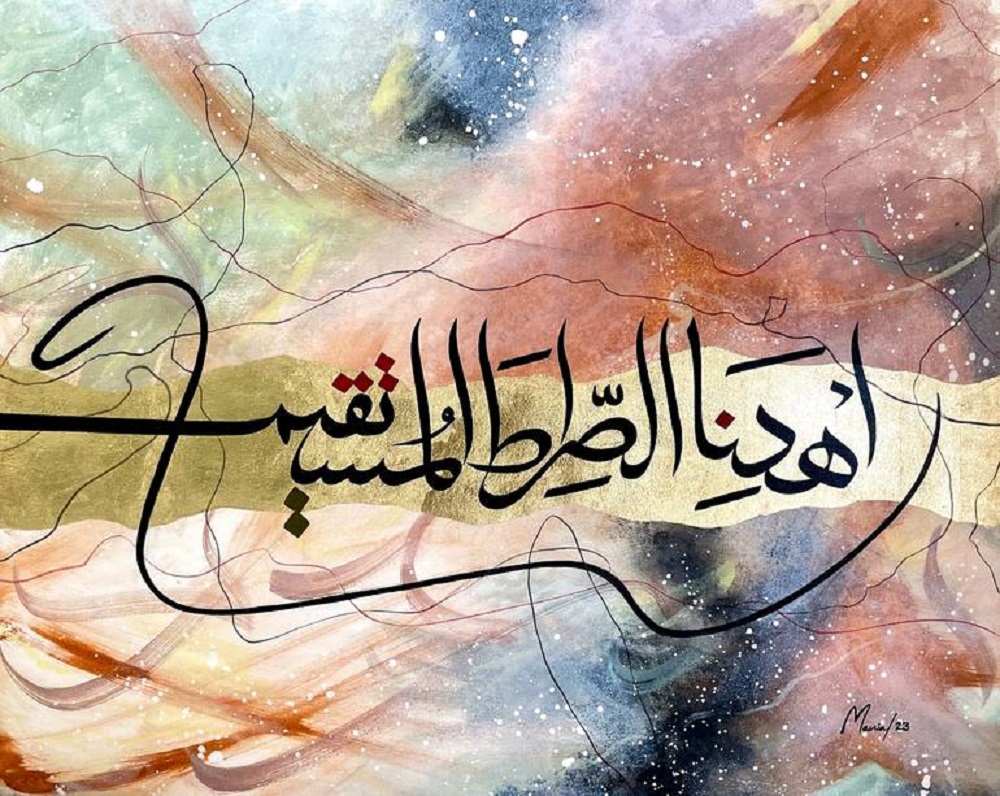Arabic calligraphy, often called the “geometry of the spirit,” has traveled far beyond its origins in the Islamic world to flourish in the United States. In mosques, art galleries, and even on city walls, the graceful curves and intricate patterns of Arabic script are being reimagined by artists and embraced by communities. For Arab Americans, it serves as a bridge to their heritage, while for wider audiences, it has become a source of artistic inspiration and cultural discovery.
A Timeless Art in a New Homeland
Arabic calligraphy, one of the most revered art forms in Islamic tradition, has found a vibrant home in the United States. Once primarily tied to religious texts and mosque decorations, it has expanded into contemporary art spaces, community centers, and universities. Today, Arabic calligraphy is not only a way for Arab Americans to preserve their heritage but also a medium that bridges cultural divides, introducing broader American audiences to the beauty of the Arabic script.
Calligraphy in Mosques and Cultural Centers
Across U.S. cities such as New York, Chicago, Los Angeles, and Houston, Arabic calligraphy adorns mosque walls, Islamic schools, and community centers. Qur’anic verses, names of God, and traditional scripts like Thuluth, Diwani, and Naskh are used to create spiritual atmospheres within these spaces. For many Arab American communities, commissioning calligraphy serves as a way of honoring tradition while strengthening identity in a multicultural society.
Arabic Calligraphy in American Art Scenes
In recent decades, Arabic calligraphy has moved beyond religious settings and into galleries and museums. Exhibitions at institutions such as the Metropolitan Museum of Art in New York and the Smithsonian in Washington, D.C. have showcased classical Islamic manuscripts alongside modern reinterpretations.
Contemporary Arab American and Muslim artists use calligraphy to experiment with abstract forms, blending Arabic letters with Western artistic styles. Artists like eL Seed, known for his large-scale murals, and U.S.-based calligraphers have brought Arabic script into street art, public installations, and digital design. This merging of tradition with innovation reflects the evolving identity of Arab Americans.
Education and Preservation
Many universities, including Harvard, Georgetown, and UCLA, now offer courses and workshops on Arabic calligraphy, often inviting master calligraphers from the Middle East and North Africa. Community programs across the U.S. also teach children and young adults how to write Arabic script, ensuring that the art form is passed down to future generations.
Online platforms have further expanded accessibility. With digital tutorials and social media, American audiences can now learn about Arabic calligraphy directly from artists worldwide. This has made the art more interactive and inclusive, inspiring a new generation of calligraphers.
Cultural Significance and Identity
For Arab Americans, Arabic calligraphy represents more than decorative art — it is an expression of cultural pride and continuity. Writing the Arabic script in beautiful forms is both a way to stay connected to heritage and a statement of identity in a country where Arab culture is often misunderstood or stereotyped.
By integrating calligraphy into public spaces, art shows, and even fashion design, Arab American communities highlight the richness of their cultural traditions while contributing to the diverse artistic landscape of the United States.
Looking Ahead
As interest in multicultural art continues to grow, Arabic calligraphy in the USA is poised to gain even more visibility. Whether in the sacred halls of mosques, on the walls of contemporary galleries, or through the hands of young learners, this timeless art form is thriving. It stands as a living symbol of beauty, spirituality, and cultural resilience in America.

